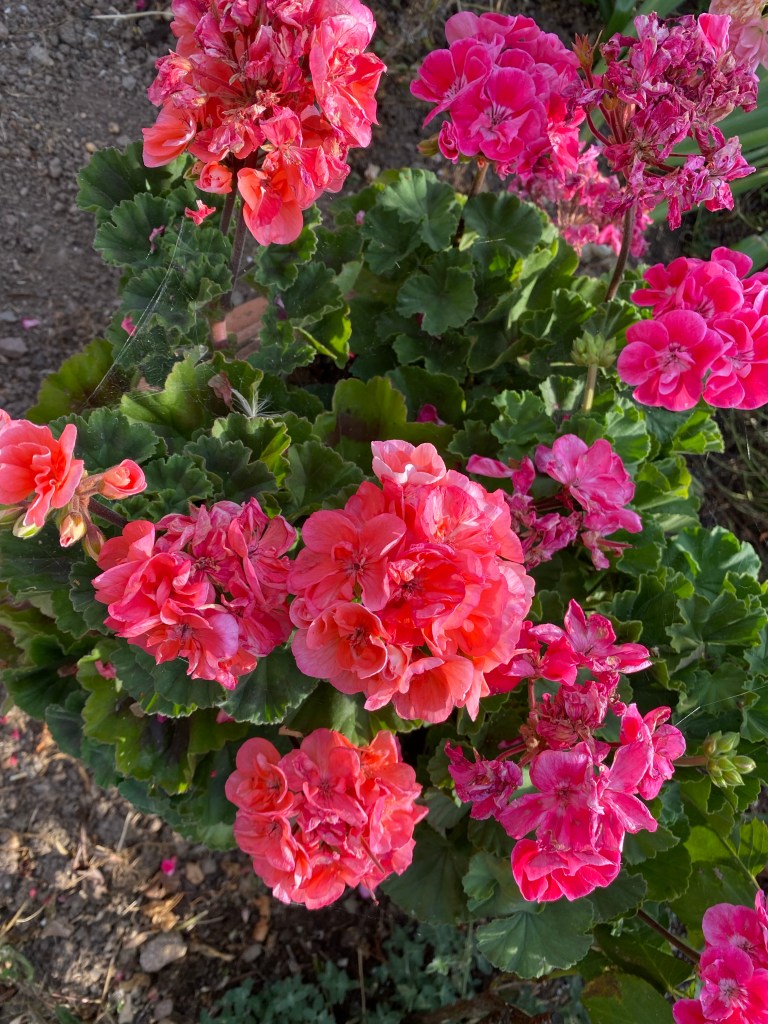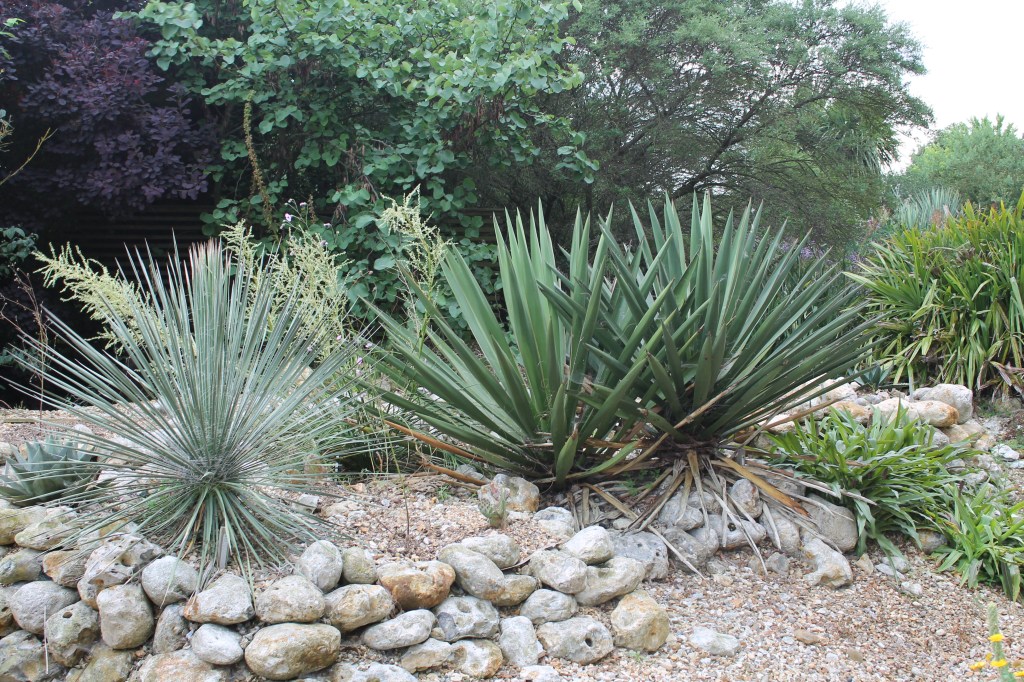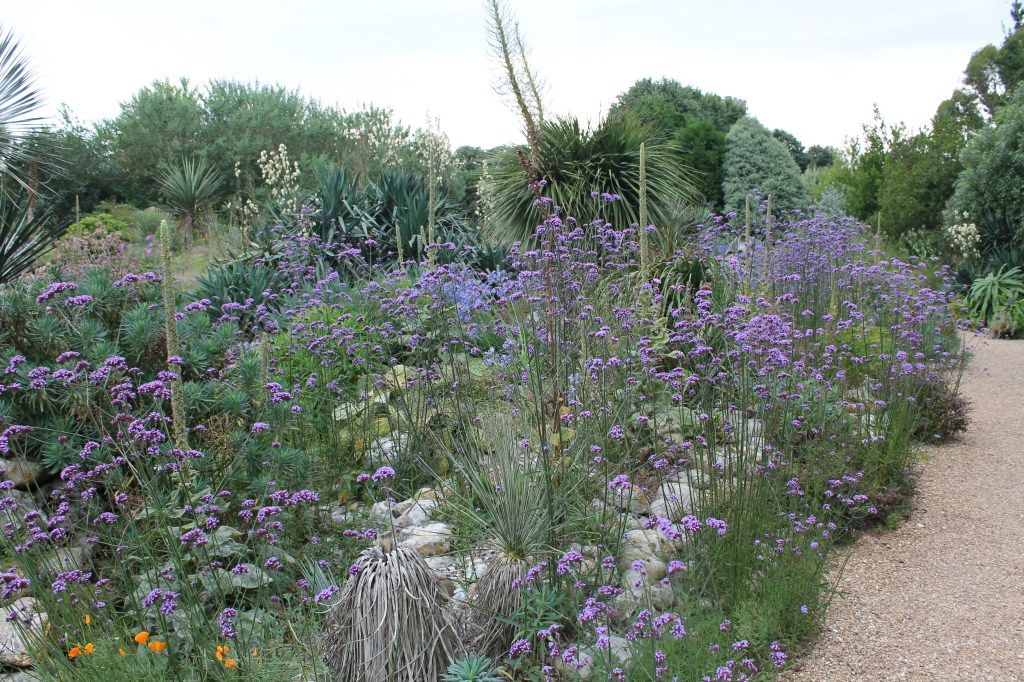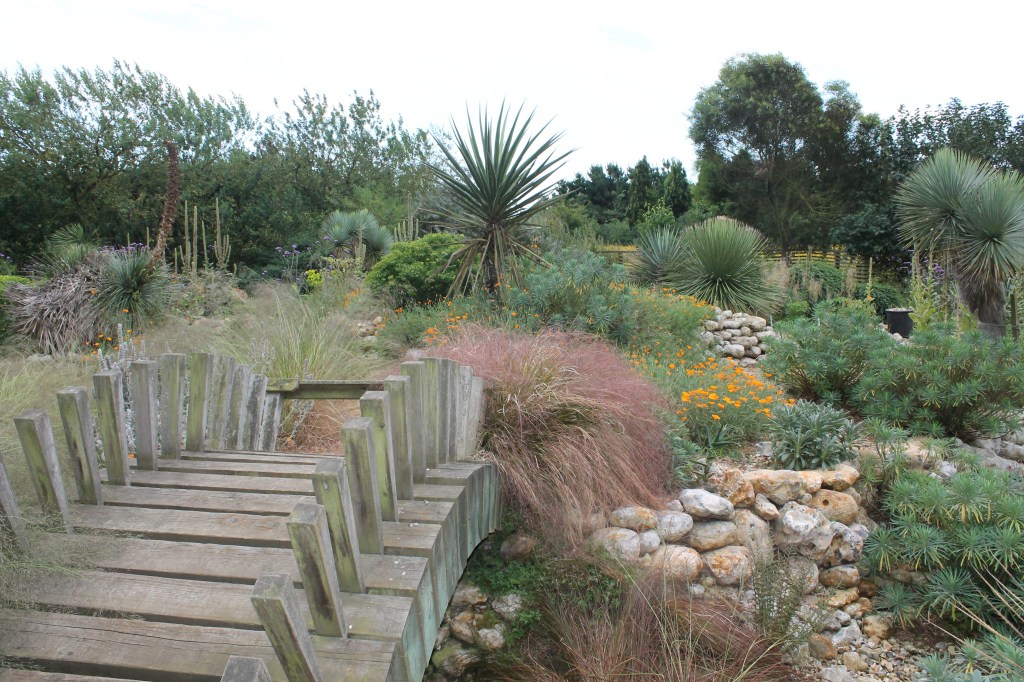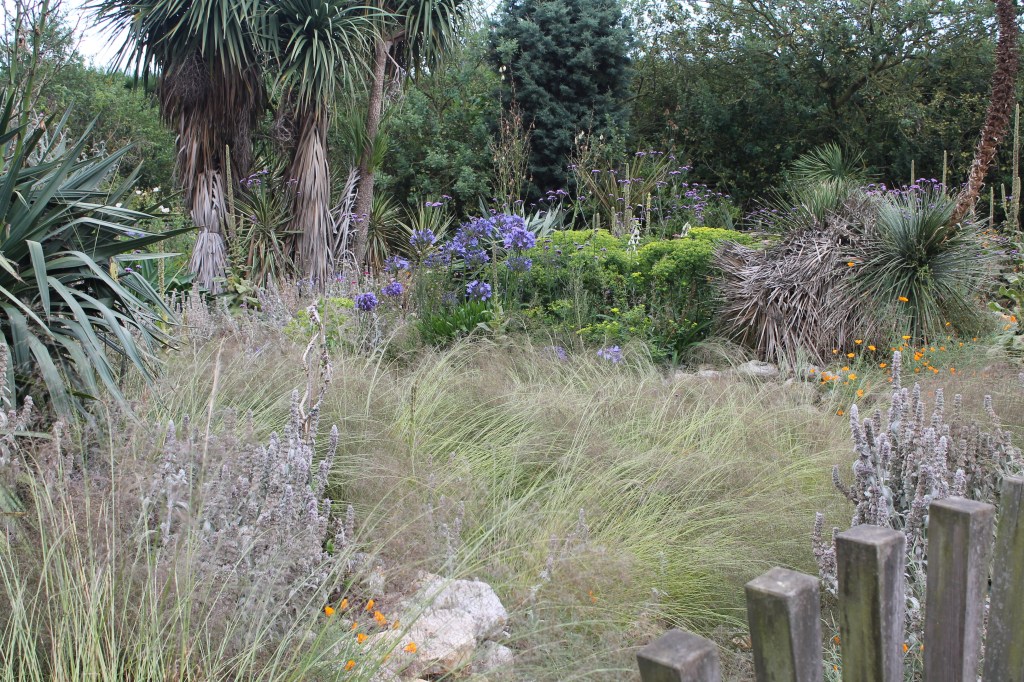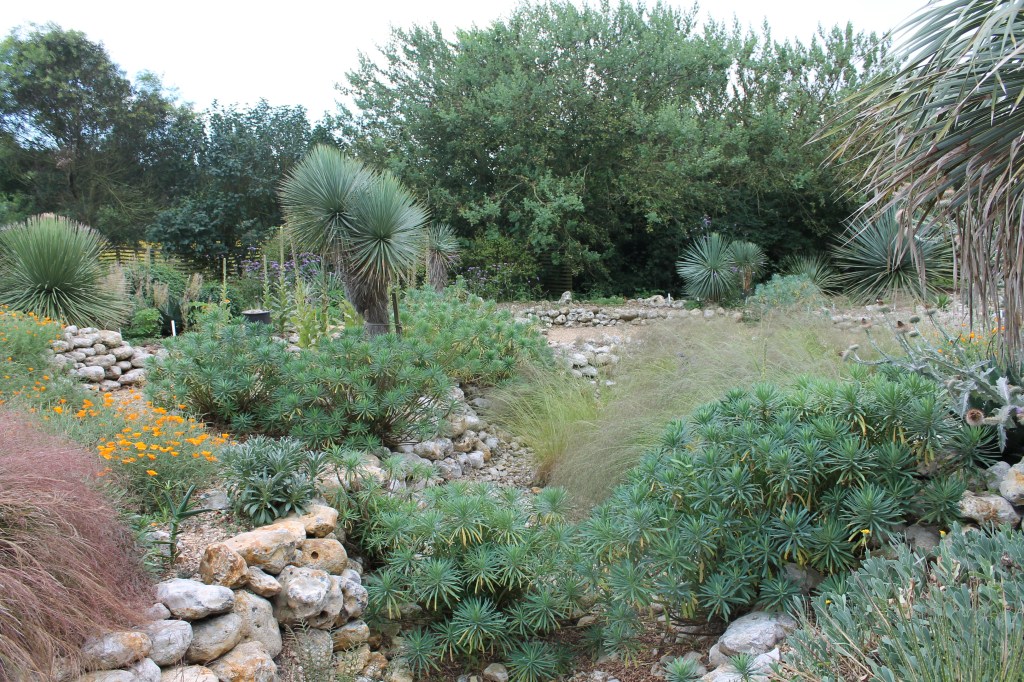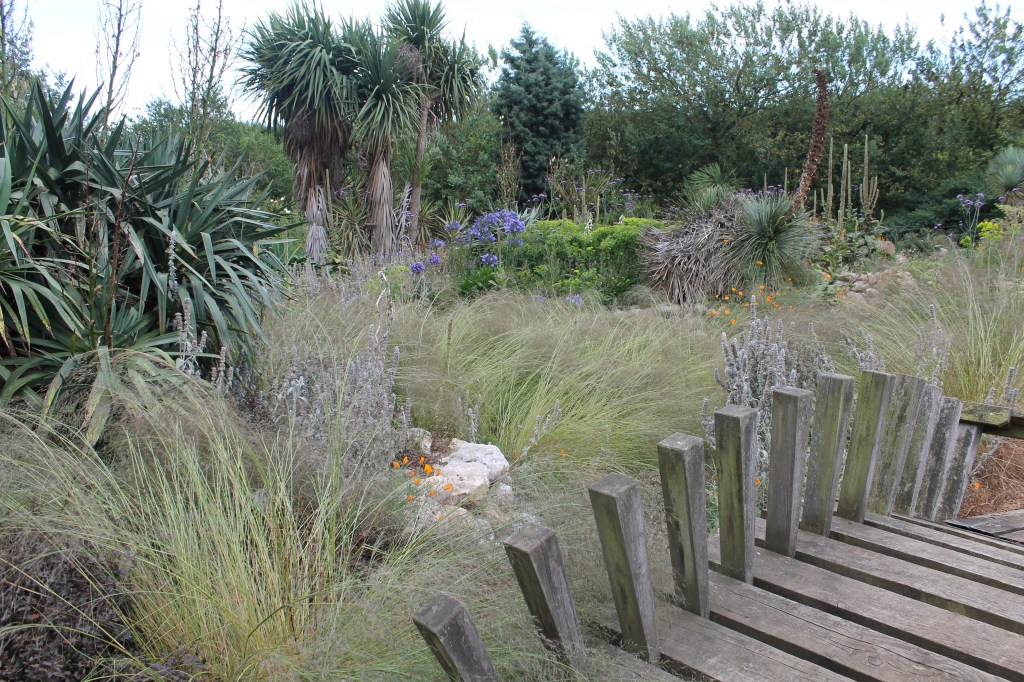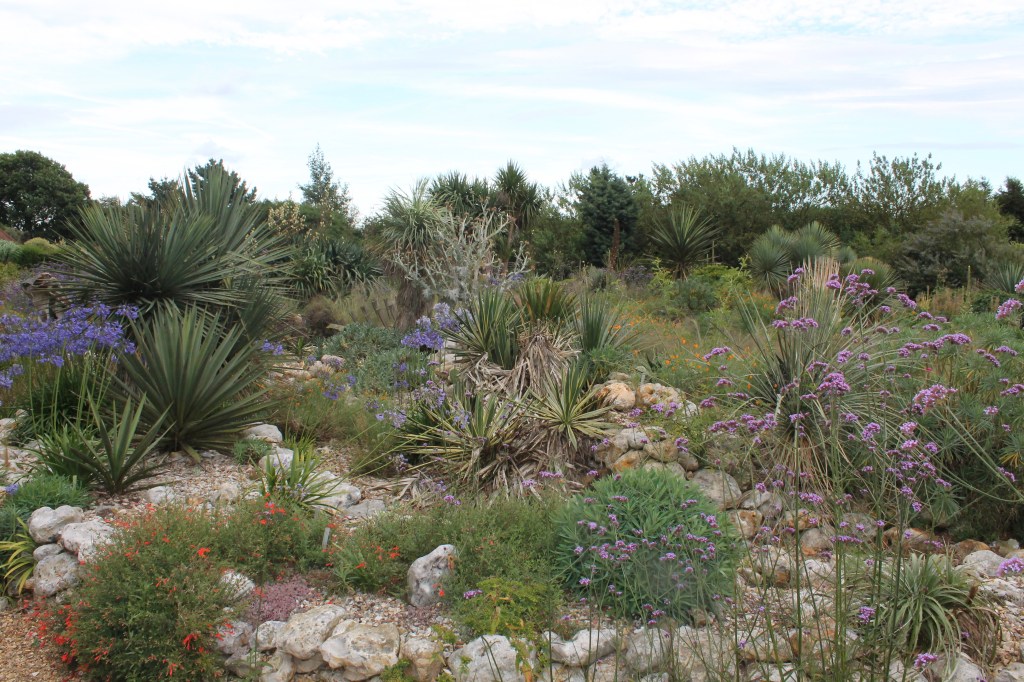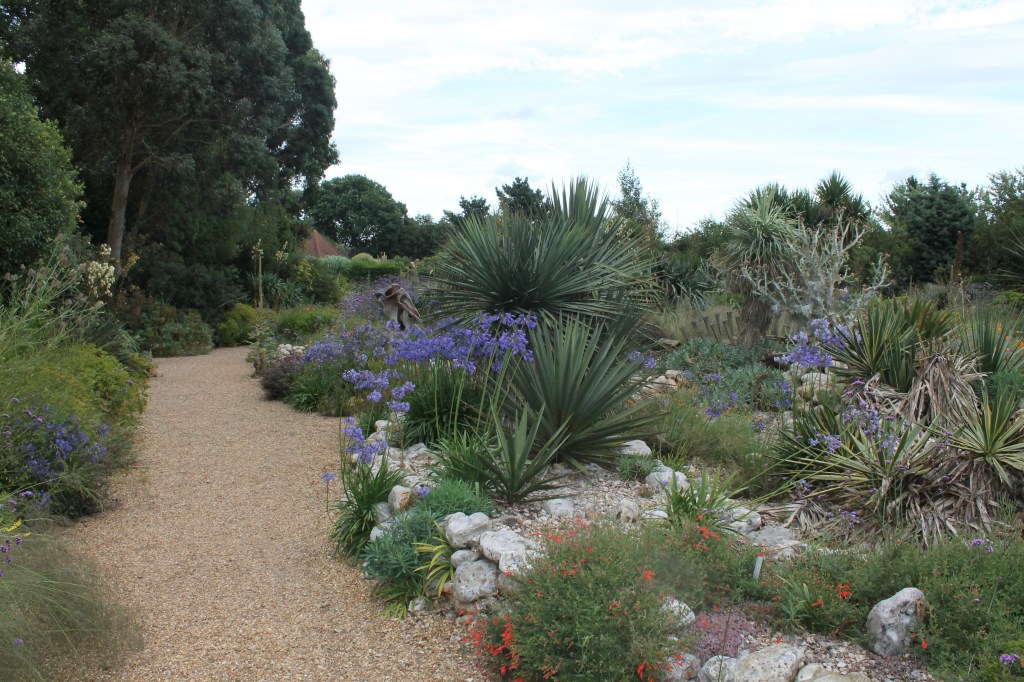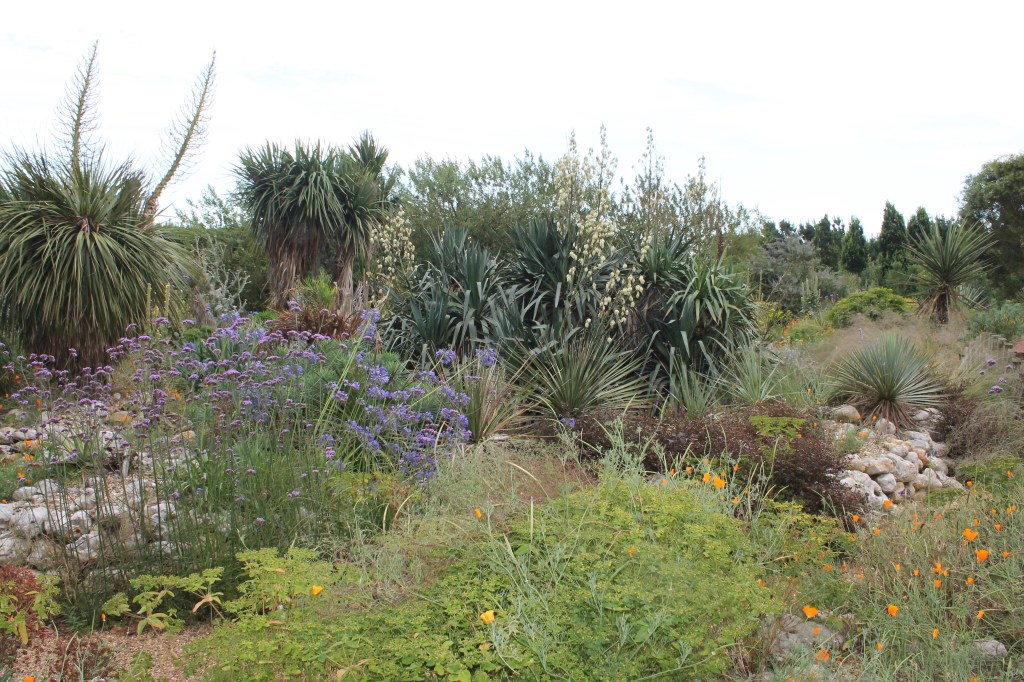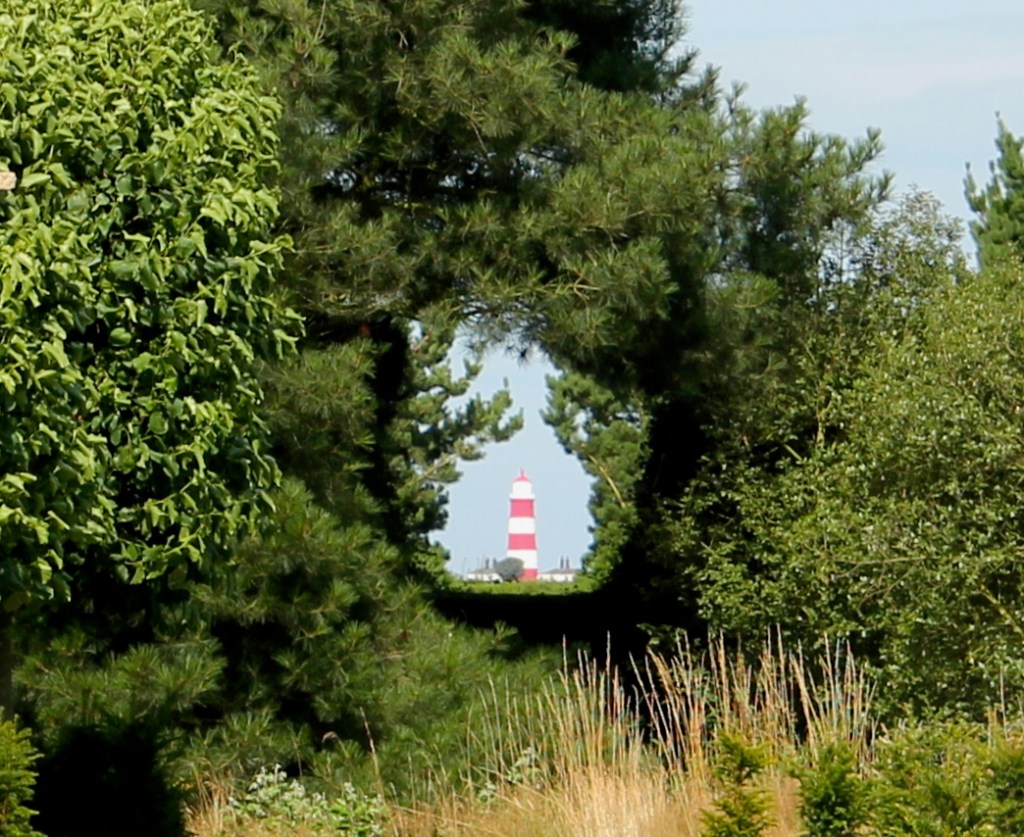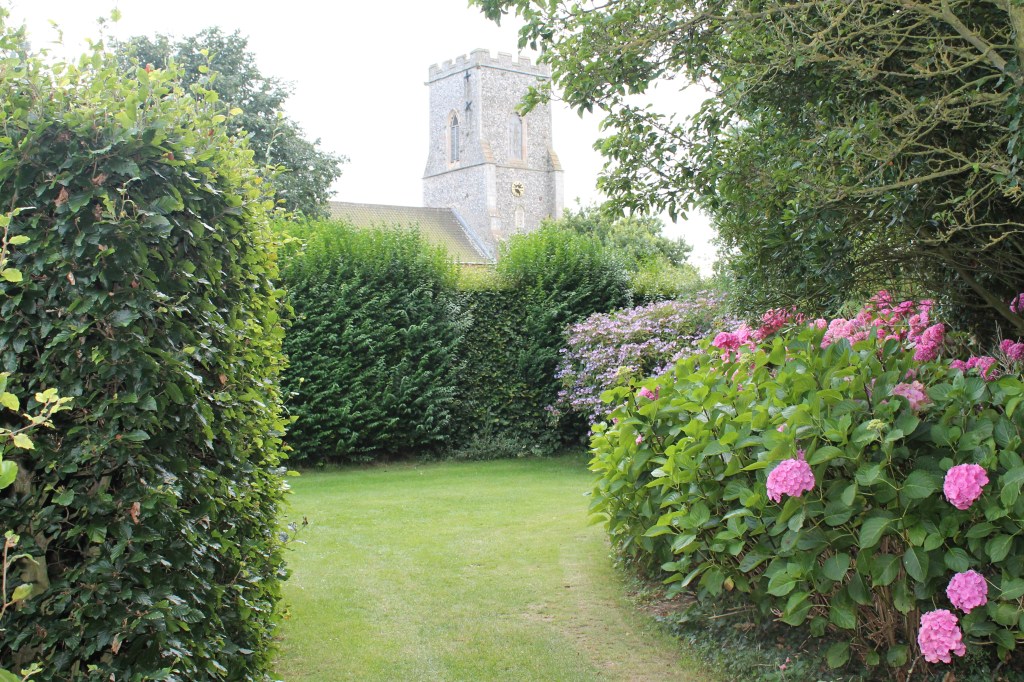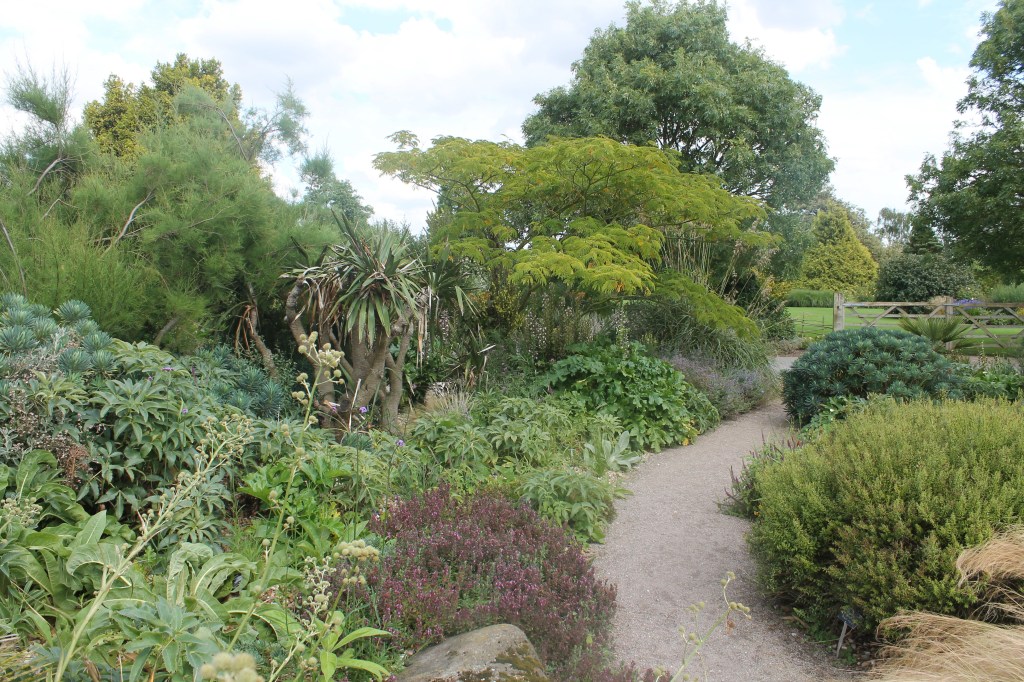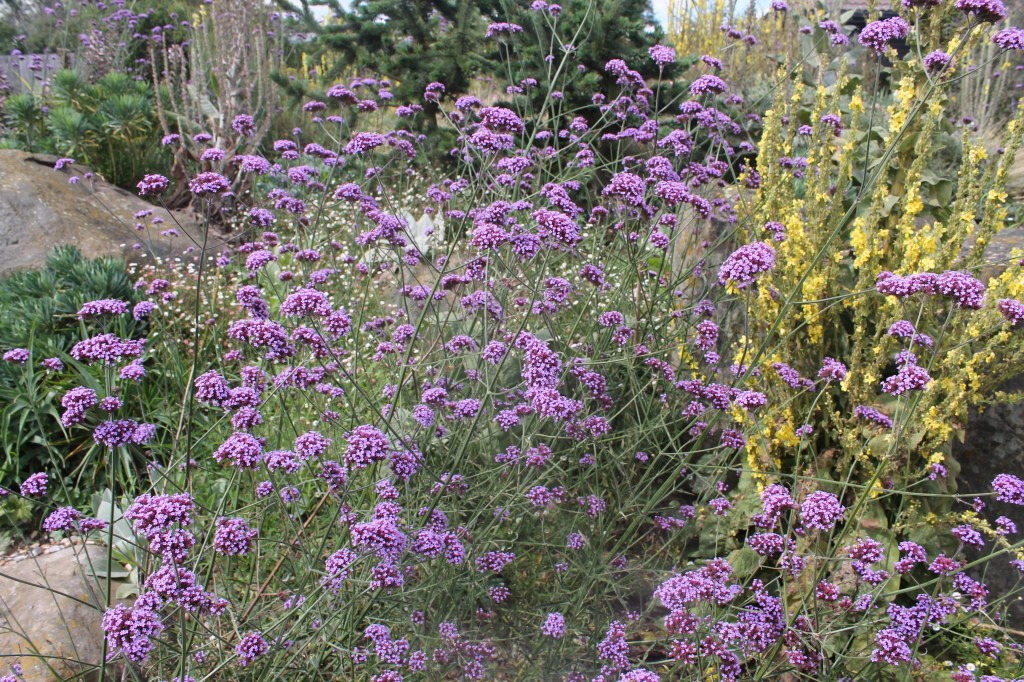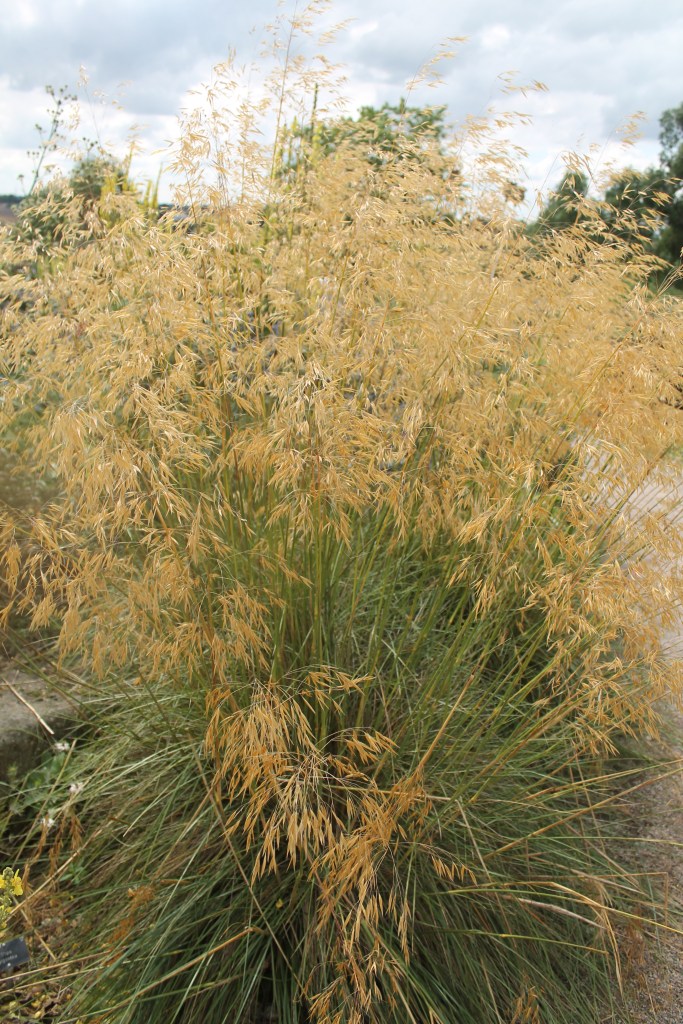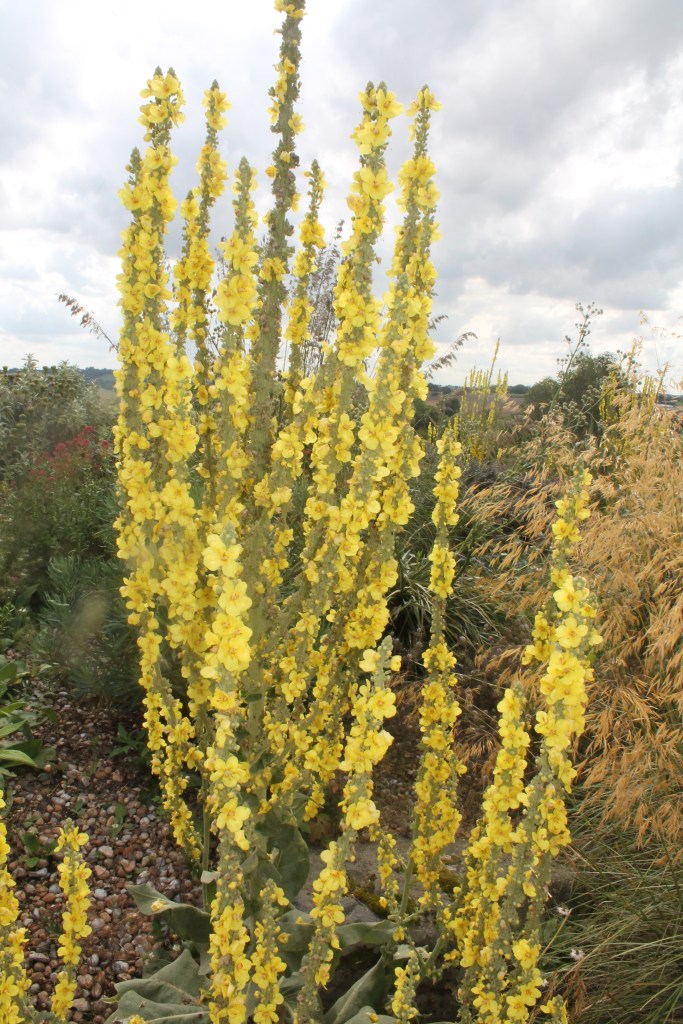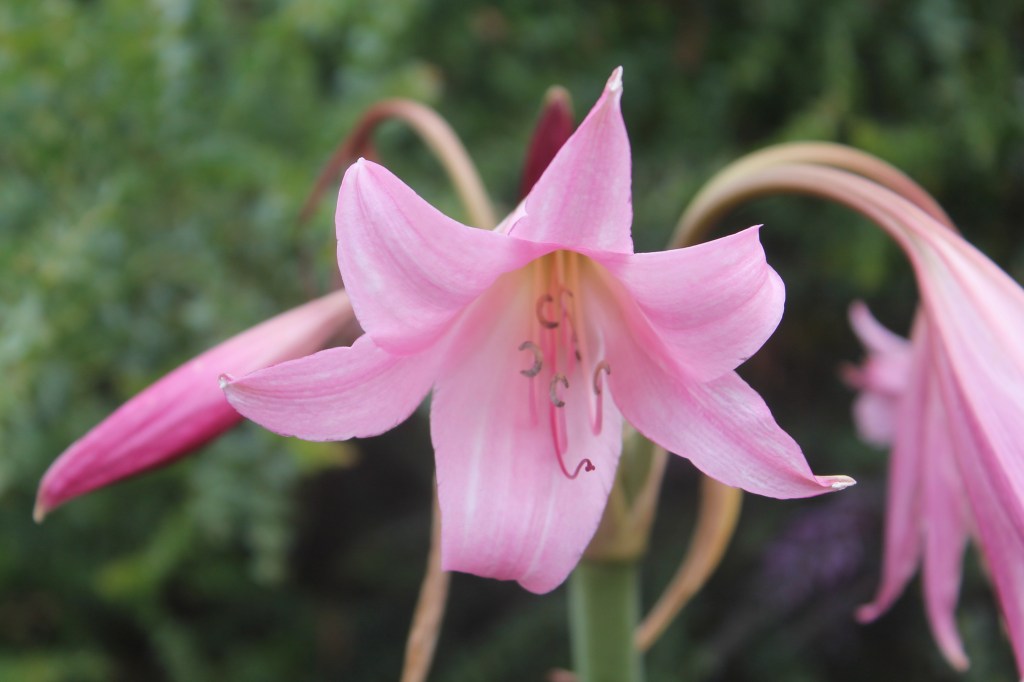During the heat wave in July, I wrote about drought-tolerant gardens: Here
I have for two years been working towards a more drought-tolerant planting scheme for both the south-facing front border and the Blue Border the priority here was to remove the requirement to water during the summer.
The front border is south facing, in full sun, while the blue border is partly shaded by next door’s huge copper beech tree.
THE FRONT GARDEN.

A small front border edges the drive, it was planted with Bearded Iris, Roses, Nepeta ‘ Six hills giant’, Salvia Nachtvlinder, Eryngium Giganteum (Miss Willmotts Ghost), Eryngium planum and Eschscholzia californica.
Last year our neighbours removed the conifer hedge bordering this bed, providing almost two feet of extra depth to the border.
Following lifting, dividing and replanting some of the bearded irises, with the extra space avalible, I have added more of the annual Eschscholzia californica, lavender, Hyssop, Helichrysum italicum (Curry Plant) Valerian phu ‘Aurea’ along with some Tulip ‘Johann Strauss’ and other species tulip bulbs.
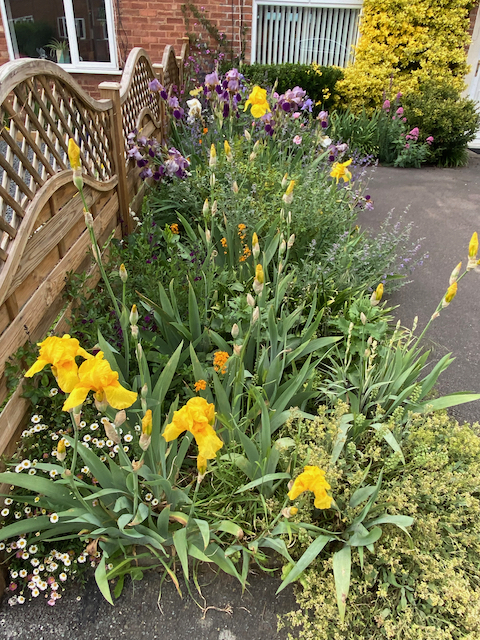
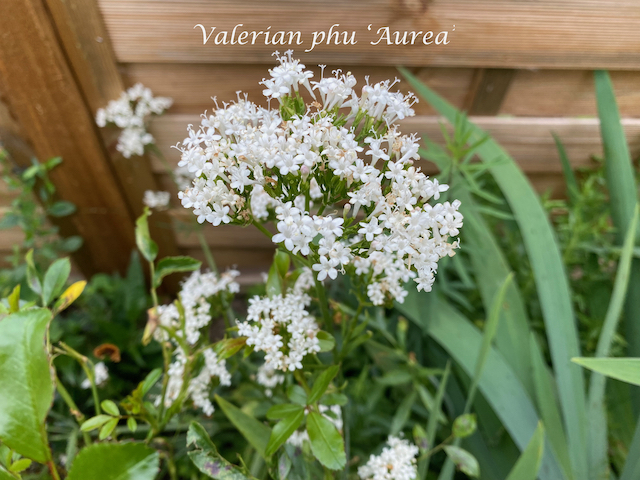
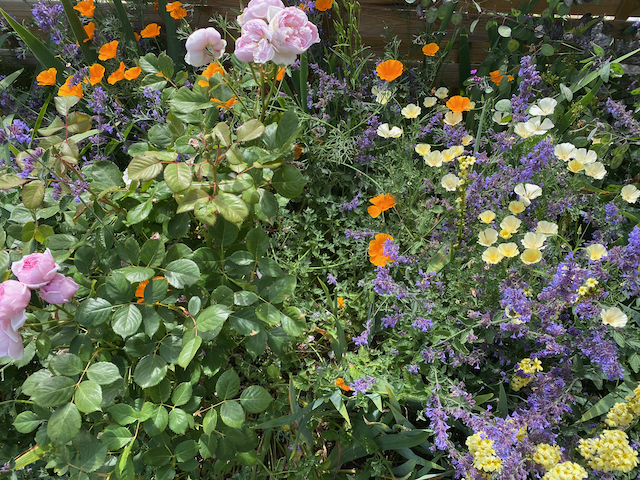
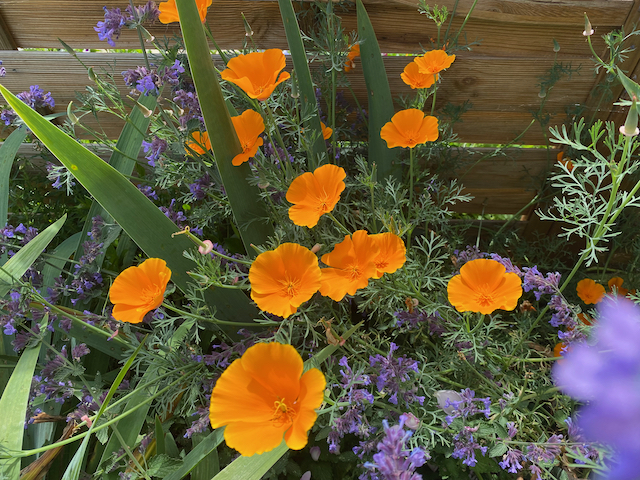
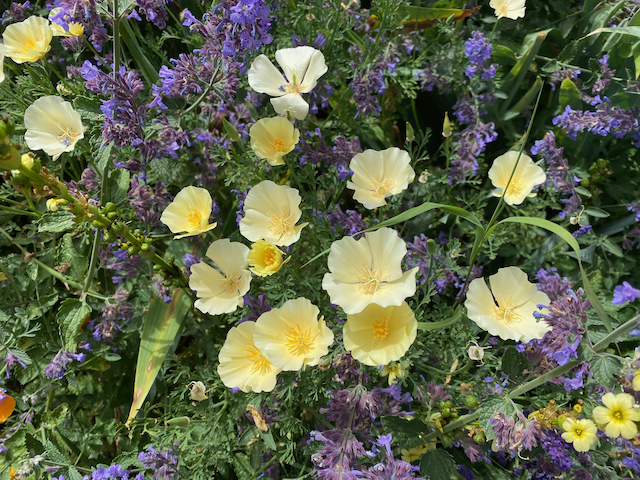
There was a Myrtus Communis already growing against the house, I have added another one here which I propagated from cuttings.
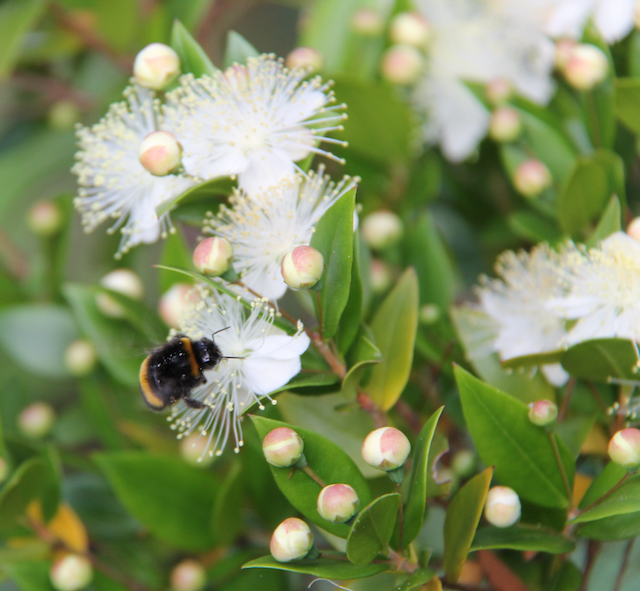
THE BLUE BORDER.
In the Blue Border plants that did not perform during last year’s drought were removed, creating space for more drought-tolerant plants. Helianthus Lemon Queen was one, it really does not like dry conditions.
Aster divaricatus was moved to the shade while others were lifted and potted for sale on our open days. Aster trinervius, ‘Asran’, Aster sedifolius and Symphyotrichum ericoides ‘White Heather’, were retained due to their flowering following the drought.
The Allium family do well in dry conditions so do the Bearded Iris, divisions from the front garden I have planted here in the space created. The blue Centaurea montana is a real survivor, we also have Centaurea montana ‘Lady Flora Hastings’ in the White & Green garden, it has white star like flowers.


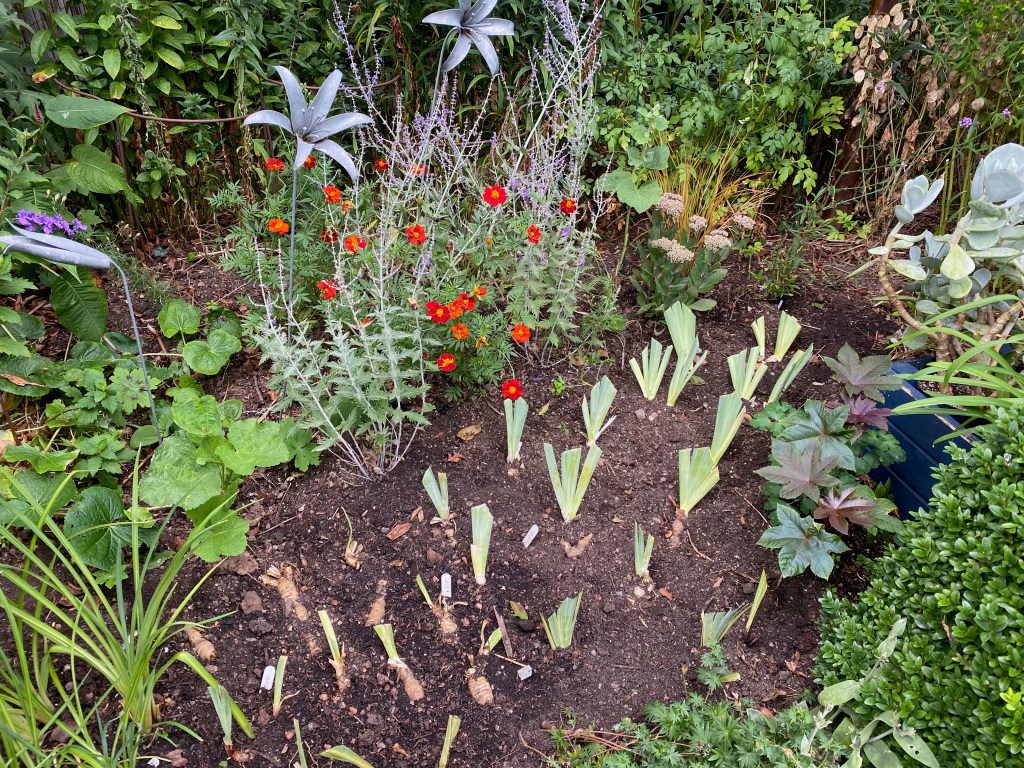
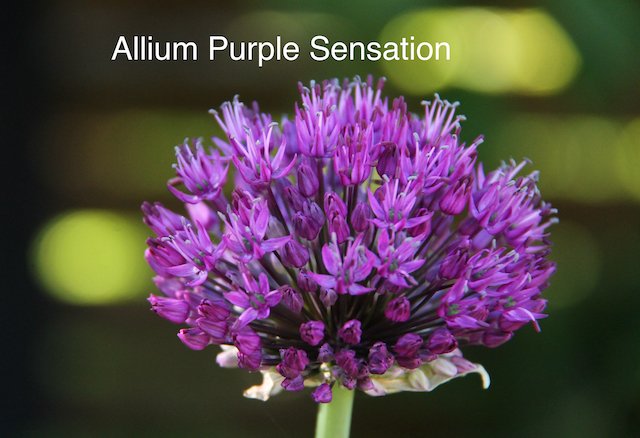


Deep tap rooting plants such as Cirsium rivulare ‘Trevor’s Blue Wonder’, Echinops ritro, Eryngium Giganteum (Miss Willmotts Ghost) and Eryngium planum, with their deep tap roots are excelent drought tolerant plants with the bonus of being popular with the pollinators.




Pilosella aurantiaca (Fox and Cubs)is a wildflower, which could become invasive, I tolerate it for its orange splash of colour. (I think it was Christopher Lloyd who said if your friends do not like orange in the garden call it butterscotch.) More information can be found on the RHS Website.
Francoa sonchifolia, Geranium phaeum var. phaeum ‘Samobor’, Hesperis matronalis, Lunaria annua ‘Rosemary Verey’, Stipa arundinacea and Stipa tenuissima happily self-seed around the garden whatever the weather.

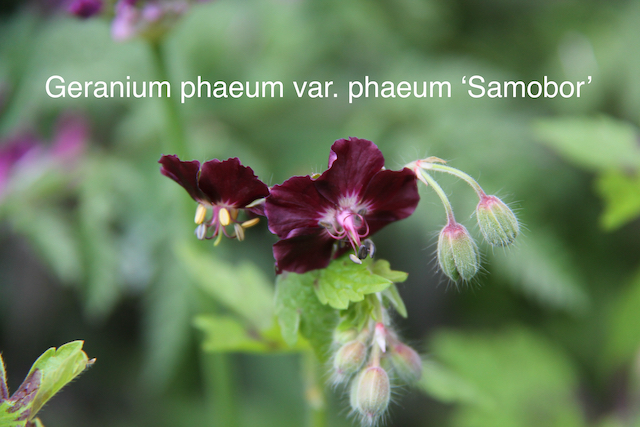

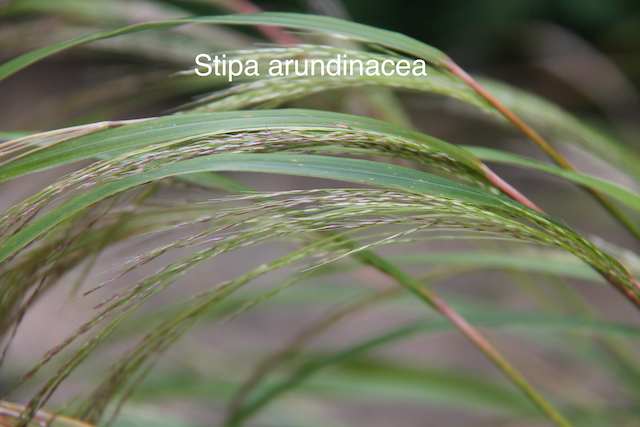
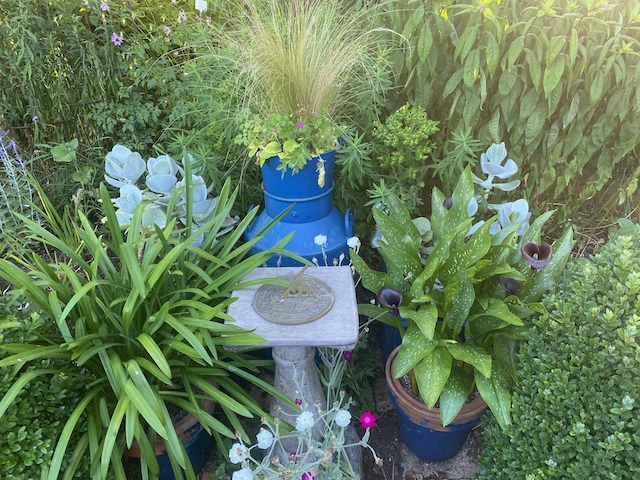

Fennel, Hollyhocks, Hyssop, Inula magnifica, Lychnis chalcedonica, Lychnis Coronaria (Red and White), Salvia Nachtvlinder and Verbena Bonariensis are drought-tolerant plants that I have grown from seed. Valeriana pyrenaica, also from seed, has been happy so far planted in the shade.

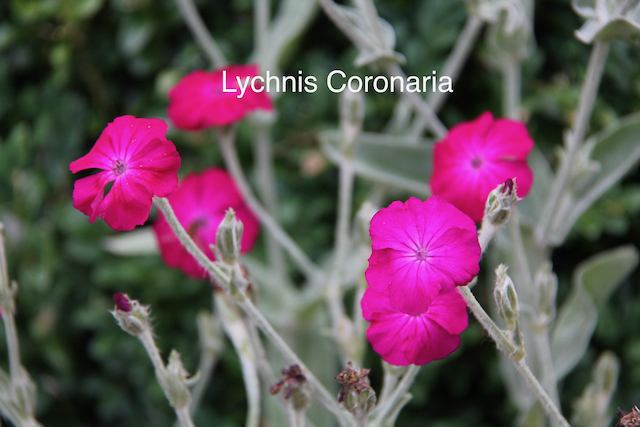
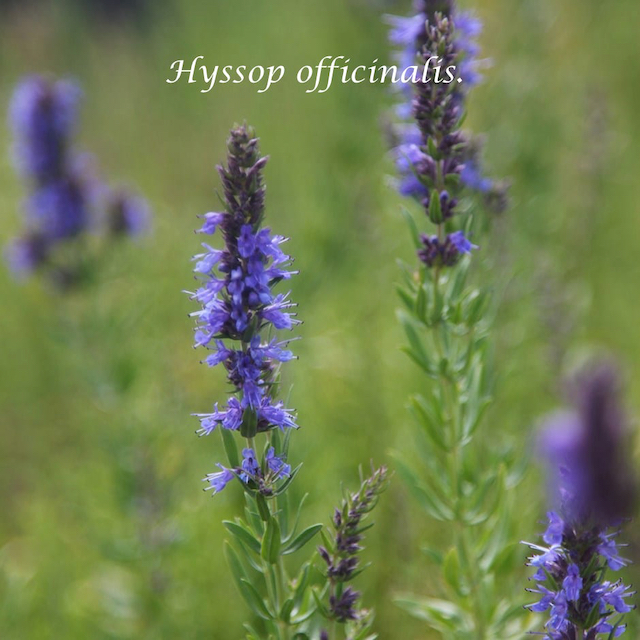

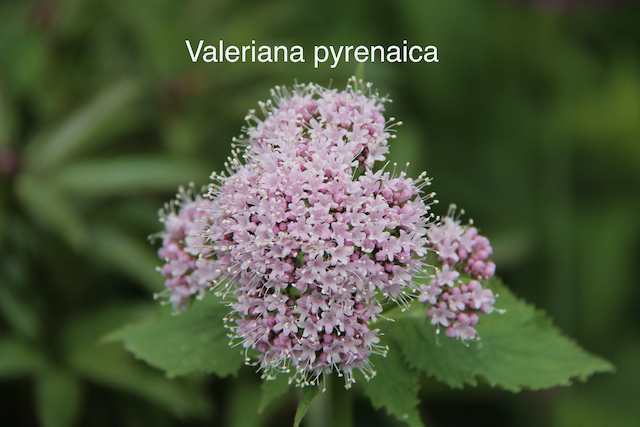
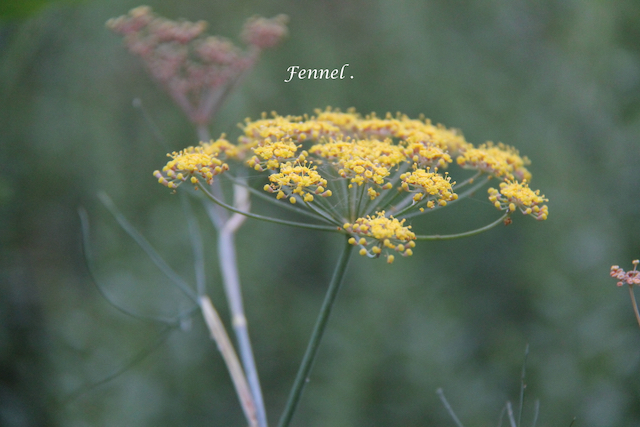
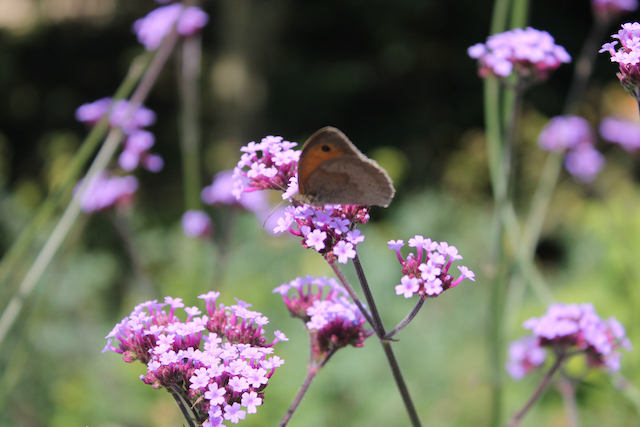
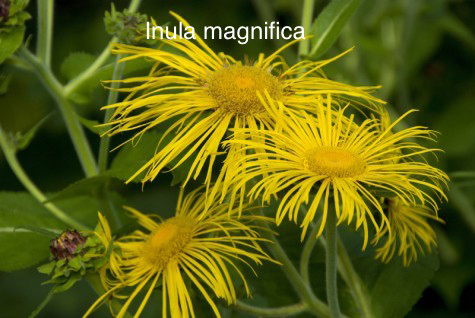

Purchased Perennials are Kniphofia Banana Popsicle, Perovskia Blue Spire, Helichrysum italicum (Curry Plant) and Sedum Mr. Goodbud
Pittosporum Tom Thumb, Thuja Occidentalis ‘Rheingold’, Buxus and Taxus bac. Fastigiata (Irish Yew) provide winter interest.
The Blue Border in winter showing the four central Buxus.
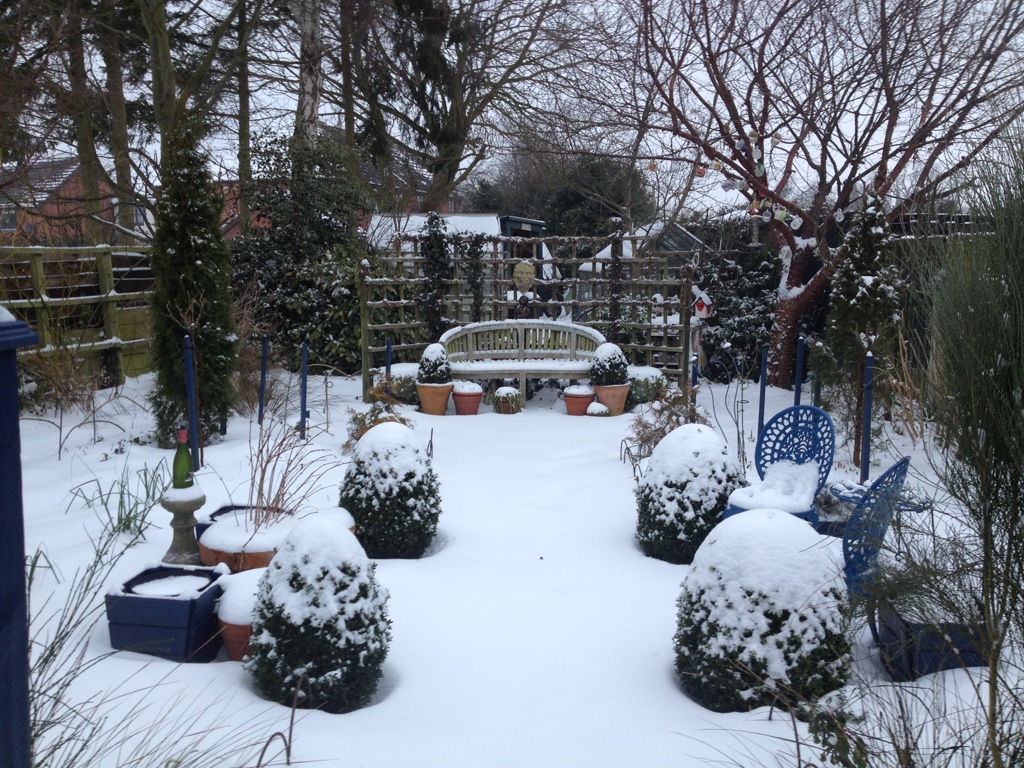
I am now waiting to see which plants have survived this winter’s low temperatures, especially the newly planted young ones.
It will be interesting to see how this tweak to the planting palette performs this summer.
Will we now have a wet one?
Drought tolerant plant list in Our Garden@19.
Allium ‘Purple Sensation’, Allium Nectaroscordum siculum.
Aster trinervius ‘Asran’. Aster sedifolius, Bearded Iris,
Calamagrostis x a. ‘ Karl Foerster ‘, Centaurea montana,
Cephalaria gigantea ( Giant Scabious ), Cirsium rivulare ‘Trevor’s Blue Wonder’, Echinops ritro, Eryngium Giganteum (Miss Willmotts Ghost), Eryngium planum, Euphorbia characias subsp. Wulfenii, Pilosella aurantiaca (Fox and Cubs), Fennel, Francoa sonchifolia pink, Geranium phaeum var. phaeum ‘Samobor’,
Helichrysum italicum (Curry Plant), Hemerocallis Red Day Lily. Hesperis matronalis, Hollyhock Apple Blossom, Hyssop, Inula magnifica, Kniphofia Banana Popsicle, Lavandula, Lychnis chalcedonica, Lychnis Coronaria (Red and White), Lunaria annua ‘Rosemary Verey’ Miscanthus sinensis, Myrtus Communis, Nepeta ‘ Six hills giant’, Origanum Laevijatum ‘gentle breeze’. Perovskia Blue Spire, Persicaria amplexicaulis Firetail, Phlox paniculate,
Pittosporum Tom Thumb, Salvia Nachtvlinder, Sedum Herbstfreud, Sedum Mr. Goodbud, Solidago Fireworks, Stipa arundinacea, Stipa tenuissima, Symphyotrichum ericoides ‘White Heather’, Taxus bac. Fastigiata (Irish Yew), Thalictrum aquilegfolium, Thalictrum flavum subsp.glaucum, Tulip ‘Johann Strauss’
Thuja Occidentalis ‘Rheingold’, Valerian phu ‘Aurea’,Verbena Bonariensis.














